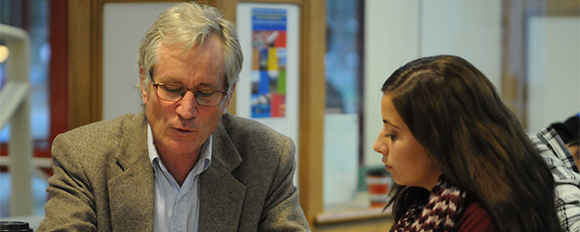Local cultural beliefs and practices promote conservation of large old trees in an ethnic minority region in southwestern China
Document Type
Article
Publication Date
3-2020
Abstract
Large old trees are keystone ecological entities and cultural heritages that provide vital services to humans in settlements. We investigated the abundance, species diversity, distribution patterns, and environmental and anthropogenic determinants of large old trees in Wuchuan Gelao and Miao (minority ethnic groups) Autonomous County in southwest China. We examined the role of large old trees in the local culture systems and their management and protection practices through in-depth sociological interviews of local villagers. The 5105 large old trees from 80 species originated either from natural forests (28.1 %) or cultivation (71.9 %). Species distribution differed by elevation and topography units. Cultivated trees (e.g. Cupressus funebris and Phoebe zhennan) were mainly distributed at low-elevation valleys and slopes. Wild trees (e.g. Ginkgo biloba and Liquidambar formosana) mainly distributed in valleys at medium elevation. Most large old trees dwelt in artificial habitats such as house-side (25.0 %), farmland (10.4 %), graveyard (9.9 %) and roadside (8.5 %). Villages located at medium elevation, close to city and with medium human population proportion had higher tree density. Elevation and distance to city had positive effect whereas population density negative effect on wild tree proportion. Villages at medium elevation had higher species diversity, whereas distance to city and farmland-area proportion had negative effect. Local people protected large old trees mainly for cultural reasons. Cultural large old trees accounted for 71.9 % of the trees, of which 65.5 % were fengshui tree and 6.4 % sacred tree. Proportion of culturally protected large old trees was positively correlated with population density, but negatively with Han population. Protection of sacred trees depended on traditional taboos, and of fengshui trees on local customary laws and family regulations. These effective traditional beliefs and practices contributed to persistence of large old trees in artificial habitats around villages despite a long period marked by rapid cultural, political, and economic changes. Wuchuan can serve as exemplary of protecting large old trees based on local culture and regulation at the community and family levels. The findings informed that large old trees need dedicated protection measures that stress their main values and threats. In addition, local customary laws, traditional culture and ecological compensation should be integrated into conservation policies and practices.
Publication Title
Urban Forestry & Urban Greening
Recommended Citation
Huang, Li; Tian, Lijuan; Zhou, Lihua; Jin, Cheng; Qian, Shenhua; Jim, Chi Yung; Lin, Dunmei; Zhao, Liang; Minor, Jesse; Coggins, Chris; and Yang, Yongchuan, "Local cultural beliefs and practices promote conservation of large old trees in an ethnic minority region in southwestern China" (2020). Faculty Scholarship. 37.
https://scholarworks.umf.maine.edu/facscholarship/37


